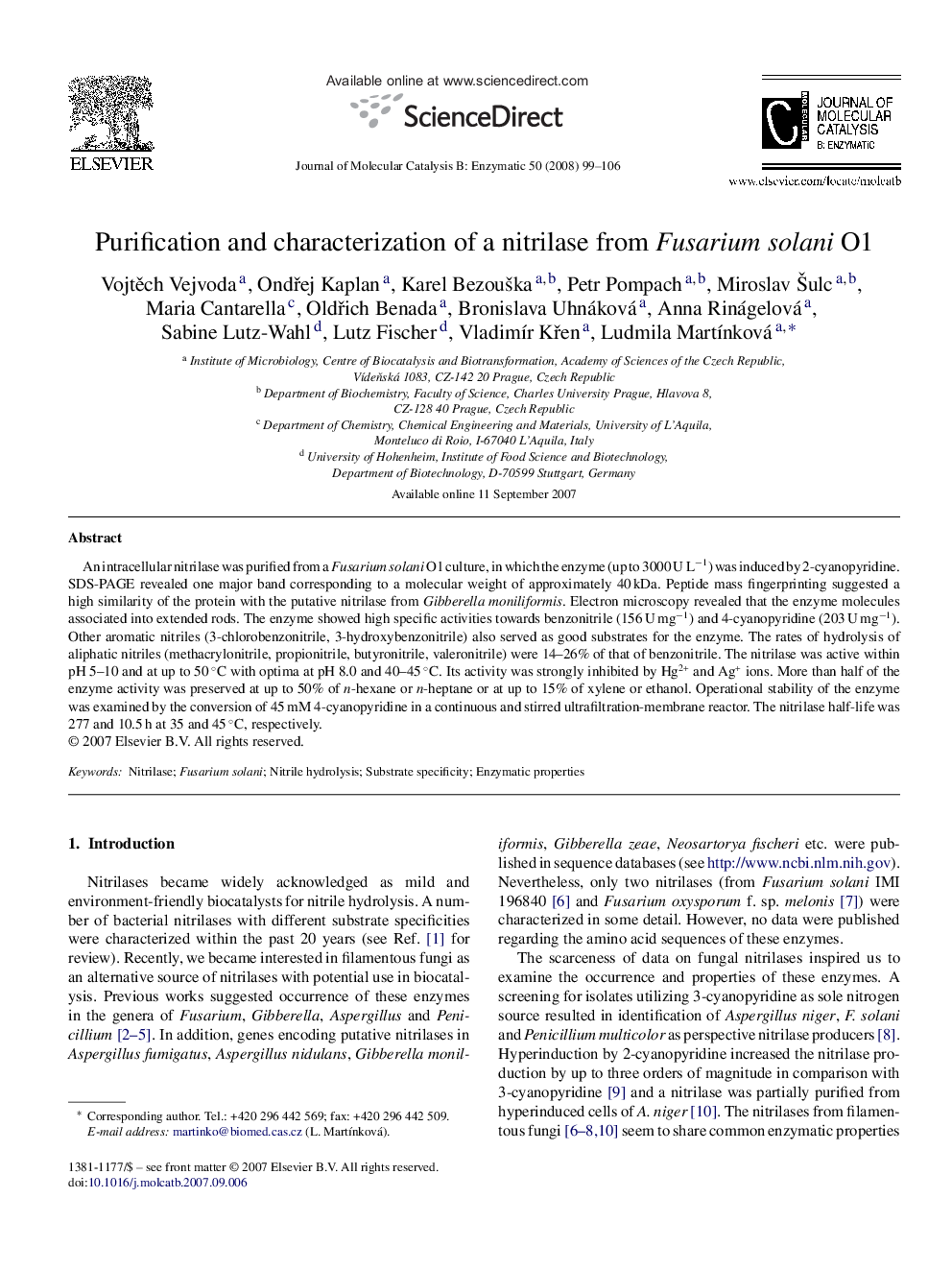| Article ID | Journal | Published Year | Pages | File Type |
|---|---|---|---|---|
| 71004 | Journal of Molecular Catalysis B: Enzymatic | 2008 | 8 Pages |
An intracellular nitrilase was purified from a Fusarium solani O1 culture, in which the enzyme (up to 3000 U L−1) was induced by 2-cyanopyridine. SDS-PAGE revealed one major band corresponding to a molecular weight of approximately 40 kDa. Peptide mass fingerprinting suggested a high similarity of the protein with the putative nitrilase from Gibberella moniliformis. Electron microscopy revealed that the enzyme molecules associated into extended rods. The enzyme showed high specific activities towards benzonitrile (156 U mg−1) and 4-cyanopyridine (203 U mg−1). Other aromatic nitriles (3-chlorobenzonitrile, 3-hydroxybenzonitrile) also served as good substrates for the enzyme. The rates of hydrolysis of aliphatic nitriles (methacrylonitrile, propionitrile, butyronitrile, valeronitrile) were 14–26% of that of benzonitrile. The nitrilase was active within pH 5–10 and at up to 50 °C with optima at pH 8.0 and 40–45 °C. Its activity was strongly inhibited by Hg2+ and Ag+ ions. More than half of the enzyme activity was preserved at up to 50% of n-hexane or n-heptane or at up to 15% of xylene or ethanol. Operational stability of the enzyme was examined by the conversion of 45 mM 4-cyanopyridine in a continuous and stirred ultrafiltration-membrane reactor. The nitrilase half-life was 277 and 10.5 h at 35 and 45 °C, respectively.
